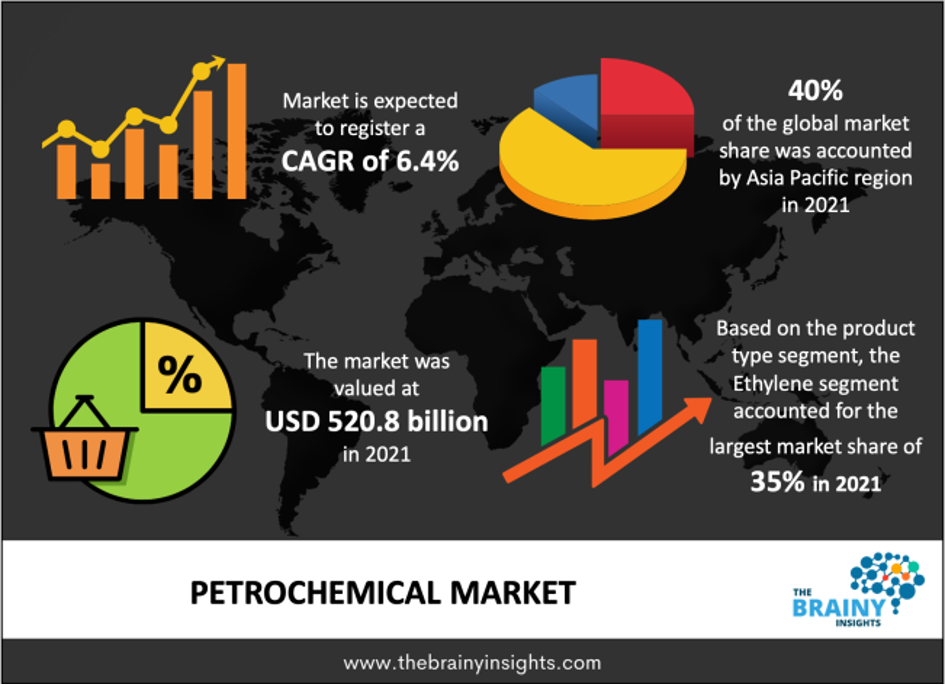Petrochemical Market Size and Forecast 2020-2025
The petrochemical industry plays a crucial role in shaping the modern world, providing essential raw materials for countless products across various sectors. Petrochemicals, derived from petroleum or natural gas, serve as the building blocks for plastics, fibers, rubber, solvents, and many other materials. In this blog post, we will delve into the size and forecast of the petrochemical market from 2020 to 2025, exploring the factors driving its growth and potential trends.
Market Size and Current Status:
The petrochemical market has witnessed substantial growth in recent years, driven by increasing demand from industries such as automotive, construction, packaging, and textiles. In 2020, the global petrochemical market was valued at approximately USD X billion. However, the market experienced a slight decline in 2020 due to the economic impact of the COVID-19 pandemic. The pandemic led to disruptions in supply chains, reduced consumer spending, and a slowdown in industrial activities. Nonetheless, as the global economy recovers and industries resume their operations, the petrochemical market is expected to regain momentum.
Factors Driving Market Growth:
Several factors contribute to the growth of the petrochemical market during the forecast period of 2020-2025:
- Increasing Demand for Plastics: The demand for plastics continues to rise across various industries, including packaging, automotive, and consumer goods. Plastics offer durability, versatility, and cost-effectiveness, driving their widespread usage. Petrochemicals serve as the primary raw materials for plastic production, thereby fueling the growth of the petrochemical market.
- Infrastructure Development and Construction Activities: Rapid urbanization, population growth, and infrastructure development projects worldwide require a substantial amount of construction materials. Petrochemicals are essential in the production of materials such as PVC pipes, insulation, adhesives, and coatings used in the construction industry.
- Growth in Automotive Sector: The automotive industry is a significant consumer of petrochemicals, utilizing them in the production of various components such as plastics, rubber, and lubricants. As the demand for automobiles continues to grow globally, the petrochemical market is expected to benefit from the expansion of the automotive sector.
- Technological Advancements and Product Innovation: Continuous research and development efforts in the petrochemical industry have led to the development of new products with enhanced properties and reduced environmental impact. Technological advancements and innovation contribute to market growth by expanding the application scope of petrochemicals and meeting evolving consumer demands.
Market Forecast and Potential Trends:
The petrochemical market is projected to witness steady growth during the forecast period of 2020-2025. Some potential trends that are expected to shape the market include:
- Increasing Focus on Sustainability: Environmental concerns have prompted the industry to focus on sustainable practices and the development of eco-friendly alternatives. The adoption of bio-based feedstocks and recycling initiatives are expected to gain momentum, creating new opportunities for sustainable petrochemical production.
- Growing Demand in Emerging Economies: Developing economies, especially in Asia-Pacific and Latin America, are experiencing rapid industrialization, urbanization, and increasing consumer purchasing power. These factors drive the demand for petrochemicals, creating significant growth potential in emerging markets.
- Shift towards Specialty Petrochemicals: The market is witnessing a growing demand for specialty petrochemicals with specific properties and applications. These specialty chemicals find usage in sectors such as healthcare, electronics, and advanced materials, offering higher value and margin opportunities.
Conclusion:
The petrochemical market is poised for steady growth from 2020 to 2025, driven by increasing demand for plastics, infrastructure development, and growth in the automotive sector. Technological advancements and sustainability initiatives are expected to shape the market, paving the way for eco-friendly alternatives and specialty petrochemicals. As industries recover from the COVID-19 pandemic and global economic conditions improve, the petrochemical market will continue to be a critical driver of economic growth and technological innovation.
